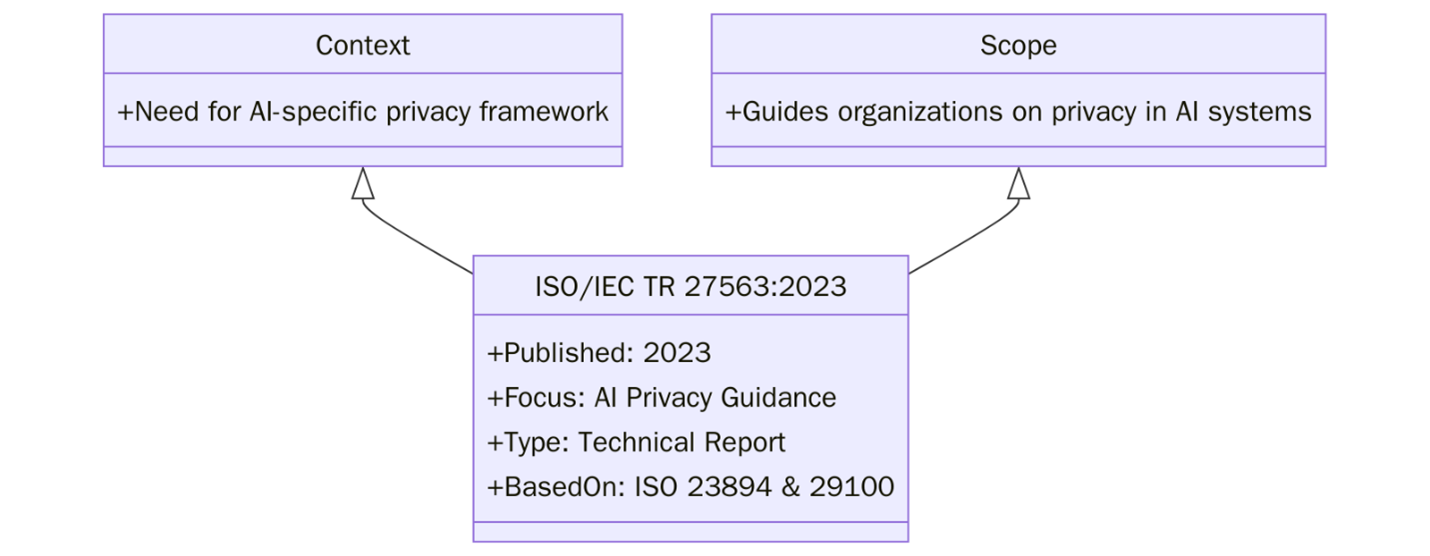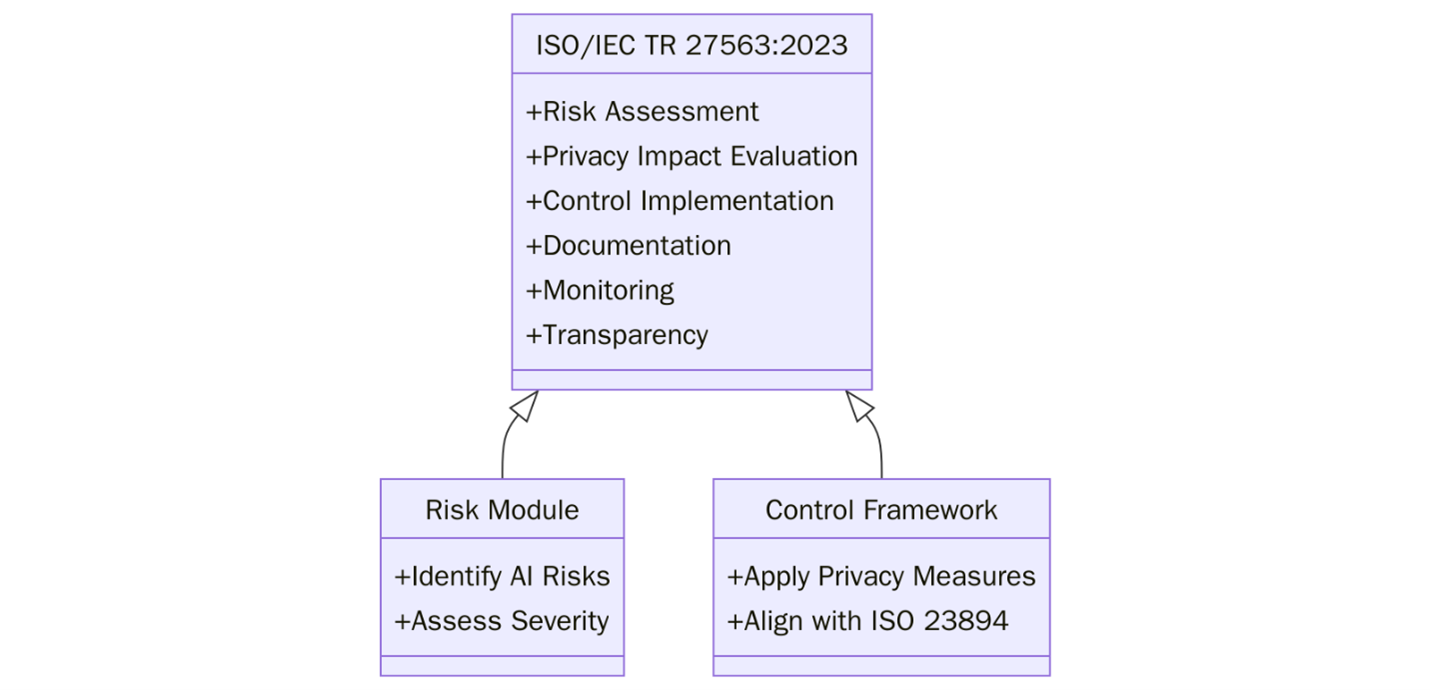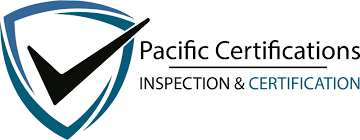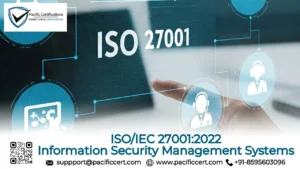What is ISO/IEC 27563?

ISO/IEC 27563 is a technical report that outlines how security and privacy issues can be identified and addressed across a variety of artificial intelligence (AI) use cases. As AI systems become more integrated into decision-making and operational tasks, the need to assess potential risks increases. This standard focuses on practical, real-world examples where AI is used and examines how to manage related concerns early in the lifecycle.
The technical report is especially useful for industries deploying machine learning, natural language processing, computer vision, or other AI techniques in high-impact environments. These include banking, health care, transportation, and energy. It helps teams evaluate how security threats or privacy failures could arise from model behavior, data misuse, or unintended outputs.
ISO/IEC TR 27563 does not replace core security or privacy standards like ISO/IEC 27001 or ISO/IEC 27701. Instead, it supplements them by adding guidance specific to AI-driven tasks and technologies.
For audit and certification assistance, contact us at support@pacificcert.com.
Purpose
The purpose of ISO/IEC TR 27563 is to help organizations examine AI use cases through the lens of privacy and security risk. Unlike traditional software, AI systems often adapt and change based on training data, which can result in unpredictable outcomes.

This standard provides guidance to anticipate those risks by linking AI tasks with security threats and privacy vulnerabilities. It is particularly valuable during early design or integration phases where architecture and intended use are still being shaped.
Scope and Applicability
ISO/IEC TR 27563 applies to any organization deploying AI systems in real-world applications. These include customer service bots, fraud detection systems, automated medical diagnostics, image recognition tools, and more. It is suited for developers, system architects, cybersecurity teams, and data governance professionals.
The report is applicable whether AI is embedded in on-premise tools, edge devices, or cloud-based environments. It supports private and public sectors equally and can be used during feasibility reviews, security assessments, or product development cycles.
Key Definitions
AI Use Case: A specific scenario in which artificial intelligence is applied to solve a problem or carry out a task.
Privacy Risk: The possibility that personal data could be exposed, mishandled, or misinterpreted due to system behavior.
Security Threat: Any potential source of harm to the AI system, such as data tampering, adversarial input, or model inversion.
Contextual Sensitivity: The degree to which the AI system must adjust to different social, ethical, or operational settings.
Human Oversight: The ability for people to review, correct, or stop an AI system’s action if something goes wrong.
Clause-wise Structure of ISO/IEC TR 27563
Clause | Title | Description |
1 | Scope | Details types of use cases and relevance to different industries |
2 | Normative References | Lists supporting documents and prior ISO/IEC guidance |
3 | Terms and Definitions | Clarifies key phrases like AI use case, threat modeling, and explainability |
4 | Classification of AI Use Cases | Groups use cases by task, such as prediction, automation, or classification |
5 | Privacy and Security Challenges | Discusses risks tied to data access, decision transparency, and inputs |
6 | Mapping Risks Across Use Case Categories | Shows where risks are most common depending on AI task type |
7 | Observations and Recommendations | Provides guidance to reduce or anticipate those risks |
What are the requirements of ISO/IEC 27563?
To apply the standard properly, organizations must analyze their AI systems across different task types such as classification, forecasting, or clustering. Each of these presents its own risk profile. Teams should document where AI models are used, what kind of data they rely on, and how outcomes are generated.

Key actions include:
- Identifying potential threats based on task structure
- Checking for misuse of training data or unexpected inference behavior
- Mapping model outputs to risk scenarios such as false positives or data leakage
- Building human review checkpoints where decisions are impactful
- Aligning with base-level security protocols like ISO/IEC 27001 and ISO/IEC 27701
- Reviewing transparency and explainability of model outputs for sensitive use cases
- Evaluating bias and fairness risks in data collection and model response
- Verifying logging mechanisms for access and model decisions across use cases
- Assessing lifecycle controls for AI systems including data updates and retraining
The technical report is not prescriptive, but it outlines how to perform thorough evaluations using actual operational use cases, not hypothetical models.
What are the benefits of ISO/IEC 27563?
Reviewing AI use cases using ISO/IEC TR 27563 allows companies to detect and address privacy or security issues before they affect end users. Below are the key benefits of applying this technical report in AI-heavy environments:

- Improved identification of model-specific risks Understand how different AI task types present unique privacy or threat exposures.
- Clearer AI governance planning Supports structured risk review even before system deployment.
- Better traceability of AI system decisions Helps track how models make predictions and where data influences outcomes.
- Supports use of ISO/IEC 27001 and 27701 together with AI Adds use-case depth to security or privacy audits under broader standards.
- Fewer unknown risks during launch Use-case mapping can uncover unseen issues before systems go live.
- Improved trust in automated systems Shows steps taken to prevent misuse or unintended outcomes from AI.
- More effective integration of human oversight encourages control mechanisms when AI is used in sensitive environments.
Organizations are focusing more on securing autonomous AI agents and multi-agent systems, which have introduced new risk points in decision-making and coordination. Privacy-by-design is gaining wider adoption, especially alongside confidential computing methods that protect data even while it’s being processed.
Governments are stepping in with stricter rules—such as risk-based regulations under the EU AI Act and new AI audit frameworks in countries like the UK and India. Meanwhile, the rise in deepfake technologies has prompted companies to invest in detection tools and stronger identity verification processes to manage emerging threats.
Eligibility Criteria
ISO/IEC TR 27563 can be used by any organization developing, deploying, or evaluating AI use cases. There is no restriction on company size or industry. It is particularly suitable for firms using machine learning in areas where privacy exposure or decision impact is high.
Firms should have documentation in place to describe use case scope, system inputs and outputs, and current risk handling steps. Teams with ISO/IEC 27001, ISO/IEC 27701, or ISO 9001 may already have some of the structure required.
Certification Process: ISO/IEC TR 27563:2023
- Identify AI use cases and relevant task categories
- Document data types, decision processes, and access control
- Review against clauses of ISO/IEC TR 27563
- Stage 1 audit – review documentation and case definitions
- Stage 2 audit – evaluate privacy and security integration in practice
- Certification decision
- Annual reviews and updates based on changes in AI model behavior or data
Certification confirms the organization is using a structured approach to address privacy and security risks in AI system use.
Timeline for ISO/IEC TR 27563:2023 Certification
Certification generally takes two to three months depending on the complexity and number of AI systems in use. For companies already using structured AI design or risk documentation, timelines can be shorter. When new evaluations must be created for each use case, a longer window may be needed. Pilot projects or limited-scope audits can be used to start the process gradually.
What is the cost of ISO/IEC TR 27563:2023?
The cost depends on how many AI use cases are included and whether the audit is standalone or combined with ISO/IEC 27001 or ISO 9001. Larger systems using high volumes of sensitive data will likely require deeper assessment and longer audit time. Costs are lower when companies already use internal privacy reviews or AI design documentation that aligns with this standard.
How can Pacific Certifications help?
Pacific Certifications conducts audits based on ISO/IEC TR 27563 and related AI security standards. Our team reviews how AI systems are evaluated for privacy and threat risks. We assess model behavior documentation, decision logs, and oversight policies to confirm proper safeguards are in place.
We also offer combined audits with ISO/IEC 27001 or 27701 when AI systems are part of broader information management frameworks. Our auditors focus on actual use case behavior rather than theoretical models to give your team practical insight into areas of strength or concern.
Training and Courses
Lead Auditor Training: Learn how to assess AI systems for privacy and threat issues in line with ISO/IEC TR 27563.
Lead Implementer Training: Covers how to integrate the standard into your AI project development workflows.
Internal Auditor Training: Helps internal teams monitor use case integrity and model traceability.
Pacific Certifications provides accredited training programs. If your organization is looking for ISO/IEC TR 27563 training our team is equipped to help you. Contact us at support@pacificcert.com
FAQs
Is ISO/IEC TR 27563 only for machine learning systems?
No, it applies to any AI-based process including expert systems and NLP engines.
Can it be used along with ISO/IEC 27001 or 27701?
Yes it supports use-case-specific analysis under those standards.
Is certification mandatory?
No but many firms pursue it to improve trust and due diligence.
Does it apply to AI used in mobile or edge devices?
Yes the standard covers AI regardless of deployment environment.
What size company can use this standard?
Startups to large enterprises can apply it depending on their AI system maturity.
Ready to get ISO 27563 certified?
Contact Pacific Certifications to begin your certification journey today!
Suggested Certifications –
Read more: Pacific Blogs






